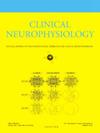Cumulative motor index in spinal muscular atrophy after gene therapy: baseline predicts maximal recovery
IF 3.6
3区 医学
Q1 CLINICAL NEUROLOGY
引用次数: 0
Abstract
Objective
Higher compound muscle action potentials (CMAP) amplitudes are associated with motor milestones acquisitions in patients with symptomatic early onset spinal muscular atrophy (SMA) after gene therapy (GT). This study aimed to propose a predictive model for the evolution of CMAP amplitudes over 36 months in these patients.
Methods
Nineteen SMA patients (mean age 8.5 months; 12 with two SMN2 copies, 7 with three) were prospectively assessed for motor scores and CMAP amplitudes (median, ulnar, fibular, tibial nerves). A cumulative motor index (CMI, sum of CMAP amplitudes) was calculated.
Results
Post-GT, CMAP amplitudes and CMI increased significantly (p < 0.05) but plateaued at low pathological values after 24 months. The plateau occurred earlier and peaked lower in patients with two SMN2 copies, correlating also with a clinical motor plateau. In these patients, baseline CMI strongly predicted the maximal plateau value at 36 months (; R2 = 0.97). Patients with three SMN2 copies plateaued at ∼10 mV, regardless of baseline CMI (R2 = 0.70).
Conclusion
The baseline CMI value emerged as a strong predictor of its maximal value after GT, along with the number of copies of SMN2.
Significance
These results support the validation of CMI as a guide for optimal patient selection and therapeutic management.
基因治疗后脊髓性肌萎缩的累积运动指数:基线预测最大恢复
目的研究基因治疗(GT)后症状性早发性脊髓性肌萎缩症(SMA)患者较高的复合肌动作电位(CMAP)振幅与运动里程碑获得相关。本研究旨在为这些患者在36个月内CMAP振幅的演变提出一个预测模型。方法对19例SMA患者(平均年龄8.5个月,12例2份SMN2拷贝,7例3份)进行运动评分和CMAP振幅(正中神经、尺骨神经、腓骨神经、胫神经)的前瞻性评估。计算累积运动指数(CMI, CMAP振幅之和)。结果24个月后,post - gt、CMAP振幅和CMI均显著升高(p < 0.05),但维持在低病理水平。具有两个SMN2拷贝的患者出现平台期更早,峰值更低,这也与临床运动平台期相关。在这些患者中,基线CMI强烈预测36个月时的最大平台值(CMIM36=2.67×CMIM0+1.92; R2 = 0.97)。无论基线CMI如何,具有3个SMN2拷贝的患者在~ 10 mV时达到稳定(R2 = 0.70)。结论基线CMI值和SMN2拷贝数是预测GT后CMI最大值的重要指标。这些结果支持CMI作为最佳患者选择和治疗管理指南的有效性。
本文章由计算机程序翻译,如有差异,请以英文原文为准。
求助全文
约1分钟内获得全文
求助全文
来源期刊

Clinical Neurophysiology
医学-临床神经学
CiteScore
8.70
自引率
6.40%
发文量
932
审稿时长
59 days
期刊介绍:
As of January 1999, The journal Electroencephalography and Clinical Neurophysiology, and its two sections Electromyography and Motor Control and Evoked Potentials have amalgamated to become this journal - Clinical Neurophysiology.
Clinical Neurophysiology is the official journal of the International Federation of Clinical Neurophysiology, the Brazilian Society of Clinical Neurophysiology, the Czech Society of Clinical Neurophysiology, the Italian Clinical Neurophysiology Society and the International Society of Intraoperative Neurophysiology.The journal is dedicated to fostering research and disseminating information on all aspects of both normal and abnormal functioning of the nervous system. The key aim of the publication is to disseminate scholarly reports on the pathophysiology underlying diseases of the central and peripheral nervous system of human patients. Clinical trials that use neurophysiological measures to document change are encouraged, as are manuscripts reporting data on integrated neuroimaging of central nervous function including, but not limited to, functional MRI, MEG, EEG, PET and other neuroimaging modalities.
 求助内容:
求助内容: 应助结果提醒方式:
应助结果提醒方式:


